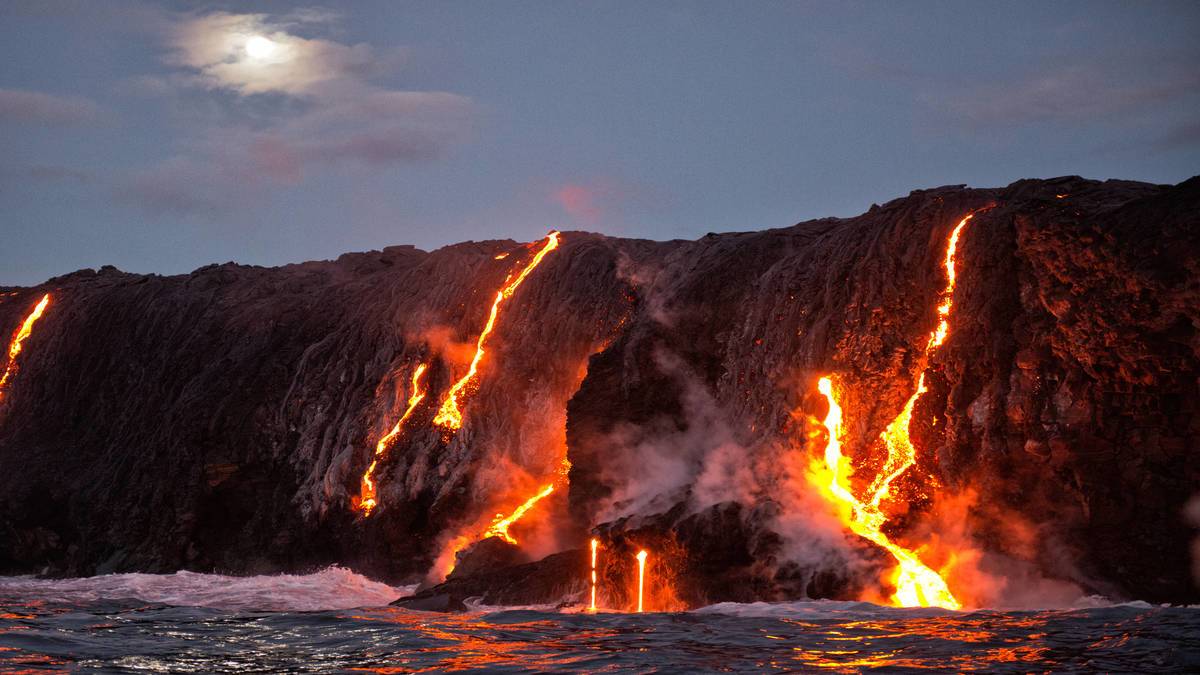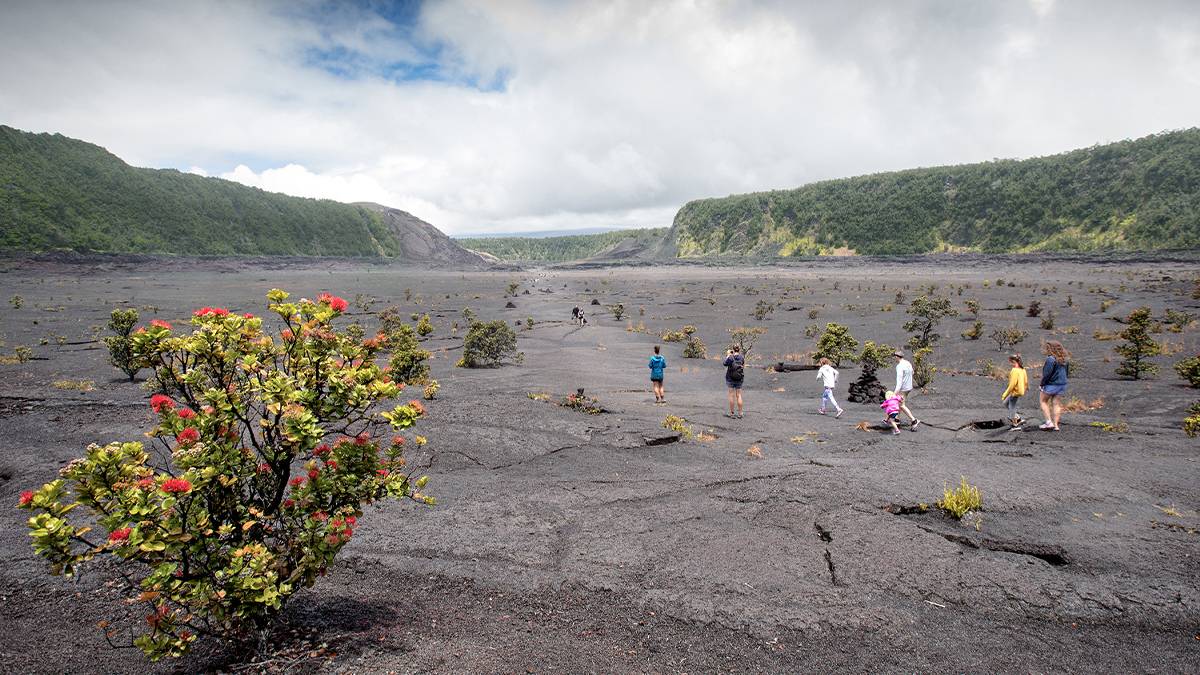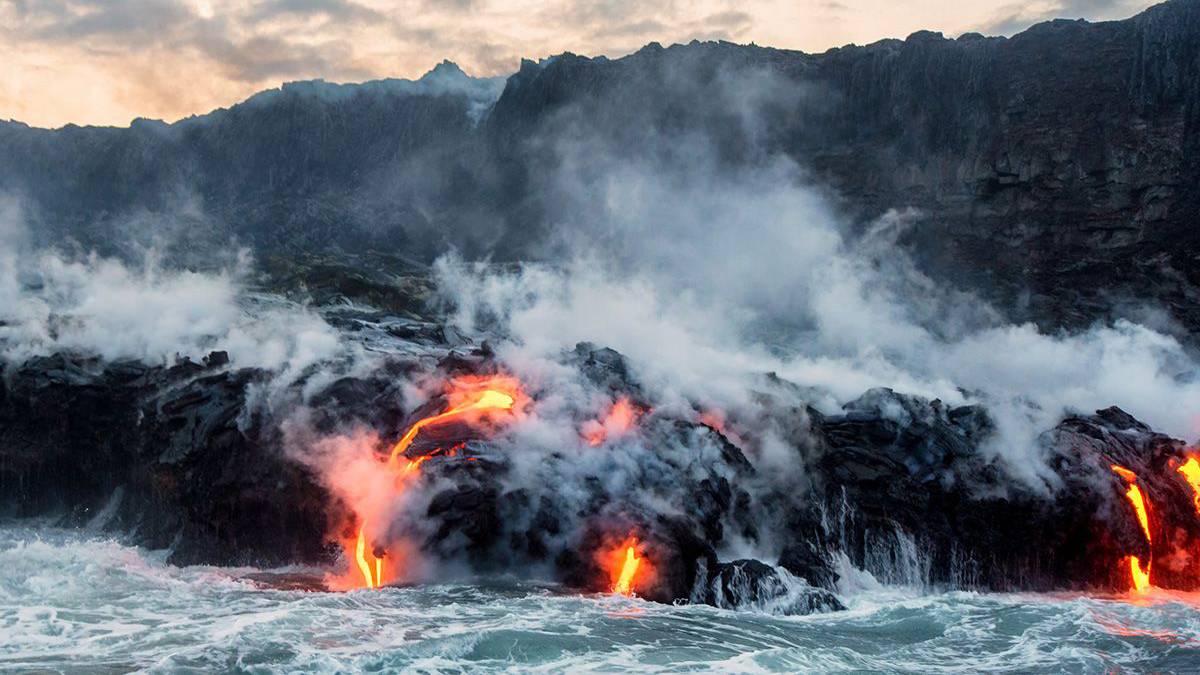Hawaii Volcanoes National Park: Top Visitor Blunders and Why You’ll Still Love It

Whether you’re keen to traverse the Crater Rim Drive or tackle the Chain of Craters road, ready to delve into lava tubes, or eager to learn at the visitor center, avoid unnecessary pitfalls by learning from the mistakes of those who’ve gone before you.
This guide aims to arm you with the critical knowledge you need to safely enjoy and deeply appreciate all that the Hawaii Volcanoes National Park offers. Buckle in; this volcanic adventure is about to ignite!
Welcome to Hawaii Volcanoes National Park, a place truly like no other on Earth. This national treasure is a living laboratory, home to some of the world’s most active volcanoes, Kīlauea and Mauna Loa.
Nestled within ‘the Big Island’ of Hawaii, Hawaiʻi Volcanoes National Park astounds visitors with its spectacular lava landscapes, rich biodiversity, and significant cultural history. Yet, each visit presents unique challenges and required precautions to make those breathtaking moments worth capturing. Read on as we shed light on the biggest mistakes people make when exploring this incredible park and why it is worth the journey despite these.
Unleash Your Inner Scientist: Don’t Forget to Visit the Hawaii Volcano National Park Visitor Center
At ‘Hawai’i Volcanoes National Park’, you’ll find yourself on a journey of discovery. Deep within this UNESCO World Heritage Site lies the heart of two of the world’s most active volcanoes, Kīlauea and Mauna Loa. The park’s visitor center is a fantastic starting place to learn and gain insights about the geological formation of Hawaii and its active volcanic activity.
Lose yourself in the fascinating world of geology while visiting the visitor center. It brings the story of the park’s formation to life, showcasing the power and beauty of the park’s natural resources. Whether you’re a seasoned explorer or a first-time visitor, the exhibits are designed to engage and inform. The Volcano National Park Hawaii visitor center also offers regular program schedules that involve ranger-led discussions and hikes which are an absolute must for every visitor.
Do you need reservations for Volcano National Park? Reservations aren’t required to enter Hawaii Volcanoes National Park. However, be ready to pay a park entrance fee, whether you visit Volcano Hawaii National Park by car, bicycle, or foot.
Thrill of the Chill: Be Prepared for the Park’s Changing Altitude
Because Hawaii Volcanoes National Park encompasses diverse environments from the sea level to the summit of the world’s most active volcano Mauna Loa, altitude changes can be dramatic. As you progress along the Crater Rim Drive or the Chain of Craters Road, you will experience varying temperatures and weather conditions.
Hence, packing layers of clothing is a must-do for your visit to the Hawaii Volcanoes National Park. Dressing in layers allows you to adjust your outfit to maintain comfort throughout the day.
Another consideration to note is the potential for altitude sickness due to the high elevations of some areas within the park, especially if you’re planning a hike up the volcano Mauna Loa. Symptoms such as shortness of breath, dizziness, or even nausea can occur above 8,000 feet.
Always ensure to pace yourself accordingly and hydrate continuously—this can help your body acclimatize to new heights. Remember, it’s not a race to reach the summit; it’s about the journey and enjoying the unique beauty of this UNESCO World Heritage site.
Moreover, changing altitude can also impact the pressure on food and drink containers. This is particularly important for those planning to carry packed lunches. Make sure you equalize the pressure of your containers at the altitude they will be opened to avoid any potentially messy situations.
Avoid the Heat: Timing Your Visit to Hawaii Volcanoes National Park
Some of the biggest mistakes occur when visitors fail to account for the heat and the unique climate that you will experience at Hawai’i Volcanoes National Park. This is not just your typical beach-side Hawaii. Remember, you’re venturing into an environment known for both its active volcanoes Kīlauea and Mauna Loa, and rugged terrains.
The park encompasses an area from sea level to the summit of the world’s most active volcanoes, resulting in a diverse range of climates. Depending on the season and the elevation, you can experience everything from tropical rainforest conditions to chilly, wind-swept deserts. The weather can shift quickly, and it’s important to come prepared for a variety of conditions.
Taking into account the park’s altitude and changeable weather, consider visiting the park earlier in the day. The mornings tend to be cooler, which is more favorable for exploring the park’s fascinating features, including the lava lake, lava flow, and awe-inspiring lava tubes like Thurston Lava Tube. A morning visit also helps you beat the infamous Hawaiian heat and the crowds.
Additionally, consider the season for your visit. The park is open all year, but certain seasons offer different experiences. The drier months from April to October can be easier for hiking but also hotter. Meanwhile, the rainy season from November to March can make the park look more vibrant, but flash floods could pose risks.
Related Post: What to Pack for Hawaii: From Hikes to Luaus – Be Prepared for Anything!
Regardless of when you choose to visit, always check the local forecast before heading out. Assess the physical condition of your group, pack plenty of food and water, and sporting a sun hat wouldn’t hurt either. This will not only enhance your experience but also ensure your safety throughout your visit.
Despite the challenges, a visit to Hawaii Volcanoes National Park is worth it. You’ll be rewarded with stunning landscapes and the chance to witness the raw power of nature up close. So, why should you visit Hawaii Volcanoes National Park? Simply put – it’s a uniquely thrilling experience that you won’t get anywhere else.
Pack Smart: Essentials for Your Hawaii Volcanoes National Park Adventure
Embarking on an adventure to Hawaii Volcanoes National Park requires you to pack smart, ensuring you’re prepared for all that this unique environment can throw at you. Navigating the park encompasses everything from exploring an active lava lake, and traversing across hardened lava flows, to discovering the inner bounds of lava tubes like the world-renowned Thurston Lava Tube (also known as Nahuku).
Gearing up correctly is not something to be taken lightly or overlooked – it’s a critical part of ensuring your safety and enjoyment in this UNESCO World Heritage Site. Notably, Hawaii’s weather can be unpredictable, and the park’s diverse environments mean temperatures can vary significantly. Here are some essentials you should consider packing:
Weather-appropriate clothing: You’ll be at various altitudes as you explore the park – from sea level to the summit of the volcano Mauna Loa. Layer up to stay warm, especially when visiting the lava lake, one of the world’s most active volcanoes.
Good-quality hiking boots: With rugged lava flow paths and the uneven floors of lava tubes, a sturdy pair of hiking boots is a necessity. They offer you the stability you need to beat tripping hazards and protect your feet from the potentially sharp lava.
Hydration and snacks: The climatic conditions, coupled with the physical challenge of exploring such a vast and varied site, can take a toll on your system. Always keep plenty of water and high-energy snacks with you to stay fueled and hydrated.
Related Post: Free Things to Do in Kauai: Which One’s Your Favorite?
Map: A map of Hawaii Volcano National Park is crucial. Remember, mobile signal can be erratic in remote areas, so a conventional map can be a lifesaver when navigating the park’s trails, including the Chain of Craters Road and Crater Rim Drive.
First Aid Kit: Given the adventurous nature of the Hawaii Volcanos Park, it’s smart to keep a basic first aid kit at hand. This should include adhesive bandages, gauze, antiseptic wipes, and pain relief medication.
Keeping these essentials in mind will help ensure your adventures in the Hawai’i Volcanoes National Park are nothing short of incredible. It’s a place where every twist and turn offers something remarkable – an International Biosphere Reserve that is a testament to the extraordinary power of nature.
Stay Safe: Navigating the Hazards of Hawaii Volcanoes National Park
Understanding the unique hazards specific to the Hawaiʻi Volcanoes National Park is critical to ensuring a safe and pleasurable park visit. Among the myriad natural wonders packed into this UNESCO World Heritage Site and International Biosphere Reserve and being home to the world most active volcanoes, the park also features its fair share of risks requiring thoughtful navigation.
You might think you’re in for just some sun-soaked traipsing, but the combined allure of the park’s craggy landscapes, active volcanoes such as Kīlauea and Mauna Loa – some of the world’s most active volcanoes, and diverse altitudes from sea level to around 13,700 feet, can create a challenging terrain.
The park’s unique natural attractions, such as the Thurston Lava Tube or ‘Nāhuku,’ may appear to offer a simple walk. However, hazards such as steep cliffs, hot and humid weather conditions, unpredictable lava flows, and even flash floods are all part of why at Hawaiʻi Volcanoes National Park, safety precautions must take precedence.
Hiking to the Thurston Lava Tube from the parking lot at the Kilauea Iki Overlook should take about 10 to 15 minutes. However, don’t let this seemingly short distance distract you from the importance of preparing accordingly. Always check the local weather forecast and assess the physical condition of your group. Remember to pack food, water, and first-aid essentials as an absolute mandatory for any hike.
Related Post: Waterfalls Near Hilo – Ultimate Kayak Tour Tips & Reviews
While inside the Thurston Lava Tube, adhere to some basic commonsense guidelines. Avoid the edges and stick to the middle of the tunnel to evade any possible tripping hazards, and remember – the serenity and isolation of the location can exaggerate even minor injuries.
Finally, bear in mind that hikes within the realms of Hawaii should in no way be compared to trails outside the islands. It’s best to take a respectful approach to the region’s raw natural beauty and inherent risks.
Respecting the Park: Best Practices for Visitors
Visiting Hawaii Volcanoes National Park is indeed a landmark adventure. Yet, as an explorer of nature’s most fiery wonders, you must adhere to some basic principles of responsible tourism. These practices aren’t just meant to help you have an enjoyable visit, but also to safeguard the park’s delicate ecosystem, its invaluable research amenities, and the safety of your fellow park-goers.
When you approach the park, choosing a strategic location to park your vehicle can dramatically simplify your day. The Kīlauea Iki Overlook Parking Lot is an optimal choice, providing convenient access to the park’s vital features. However, parking space can be limited due to the park’s popularity. Arriving early or visiting during off-peak periods can drastically enhance your experience.
Related Post: Blue Hawaiian Helicopter Big Island: Discounts & Reviews
Moving on to hiking, whether you are excited to traverse the crater rim drive or planning to explore the lava tubes, preparation is key. Before embarking on your hike, make sure to check the local forecast, evaluate the physical fitness of your group, and pack enough food and water.
Furthermore, it’s vital to understand that the hiking trails in Hawaii are distinct. They are often characterized by hot, humid weather, cliffs, and the potential for flash floods, markedly different from trails you might encounter off the islands.
The Thurston Lava Tube, a must-visit locale within the park, is a short 10 to 15-minute hike from the parking lot. Accessed via a paved pathway, hikers need to stay cautious and adhere to the middle of the tunnel to avoid unexpected tripping hazards. Remember, your expedition to the heart of Hawai’i Volcanoes National Park is filled with wonder, but the terrain and conditions demand respect and caution.
All this said, the Hawai’i Volcanoes National Park is more than worth visiting. Yes, it can be challenging, but the rewards are immense. Stunning landscapes, mind-boggling science, and a deeper connection to our planet — there’s nothing quite like it. But whatever you do, always remember: safety first. Use discretion, and judgment, and seek professional advice when necessary. Ultimately, your thoughtful and considerate approach will make your adventure a memorable one, for all the right reasons.
Is Volcano National Park Worth It?
So, you may ask, why should you visit Hawaii Volcanoes National Park? Visiting the Volcano National Park in Hawaii transcends simply witnessing the awe-inspiring power of nature. It’s an experience that invites you to understand the delicate balance of our ecosystem, the cycle of creation and destruction, and the sacred geology of the Hawaiian Islands.
From witnessing the vibrant orange lava lake at the crater to experiencing the chilling thrill of hiking in the lava tubes, this park has something unique to offer every visitor. The park pulses with raw, untamed energy and a sense of awe that travels with you long after your journey home. Regardless of whether you stay at the Volcano House Hotel or set a base outside the park, the volcanoes are an essential part of your Hawaiian experience that simply cannot be missed. Is it worth it? Absolutely.
Plan The Ultimate Big Island Hawaii Vacation
Preparing for your Hawai’i Volcanoes National Park adventure couldn’t be easier. Right now, Tripster is offering an all-inclusive Big Island vacation package tailored just for you. You get to pick the hotel that suits you best, ensuring a relaxed and comfortable stay. But that’s not all.
From the invigorating Thurston Lava Tube hike to the stunning vistas on the Crater Rim Drive, select from a fantastic range of tours and attractions. Get up close to the sizzling lava lake, explore the subterranean wonder of the lava tubes, or navigate the majestic Chain of Craters Road. All the tickets you’ll need for these breathtaking experiences can be included in your package! Finally, you can tick off those attractions from your list of “things to do Hawaii Volcanoes National Park”.
And the best part? Tripster gives you the absolute lowest price so that you can enjoy your Hawai’i Volcanoes National Park escape without the stress of overspending.
Experience the best of Hawaiian nature, culture, and hospitality, and immerse yourself in the incomparable beauty of volcanic landforms in Hawai’i Volcanoes National Park.
Volcanoes National Park FAQs
Is Hawaii Volcanoes National Park Recognized by UNESCO?
Hawaiʻi Volcanoes National Park was designated a UNESCO World Heritage Site in 1987. This park is recognized for its outstanding natural value, including its active volcanoes, unique biodiversity, and cultural significance for Native Hawaiians.
Where are the Volcanoes in Hawaii?
Volcanoes in Hawaiʻi are primarily found on the Island of Hawaiʻi, also known as the Big Island. This island is home to five volcanoes: Kilauea and Mauna Loa (currently active), Mauna Kea (dormant), Hualalai (dormant), and Kohala (extinct). There's also an active submarine volcano, Lōʻihi, located off the southeastern coast of the Big Island.
Did We Miss Anything?
Tell us in the comments below!


